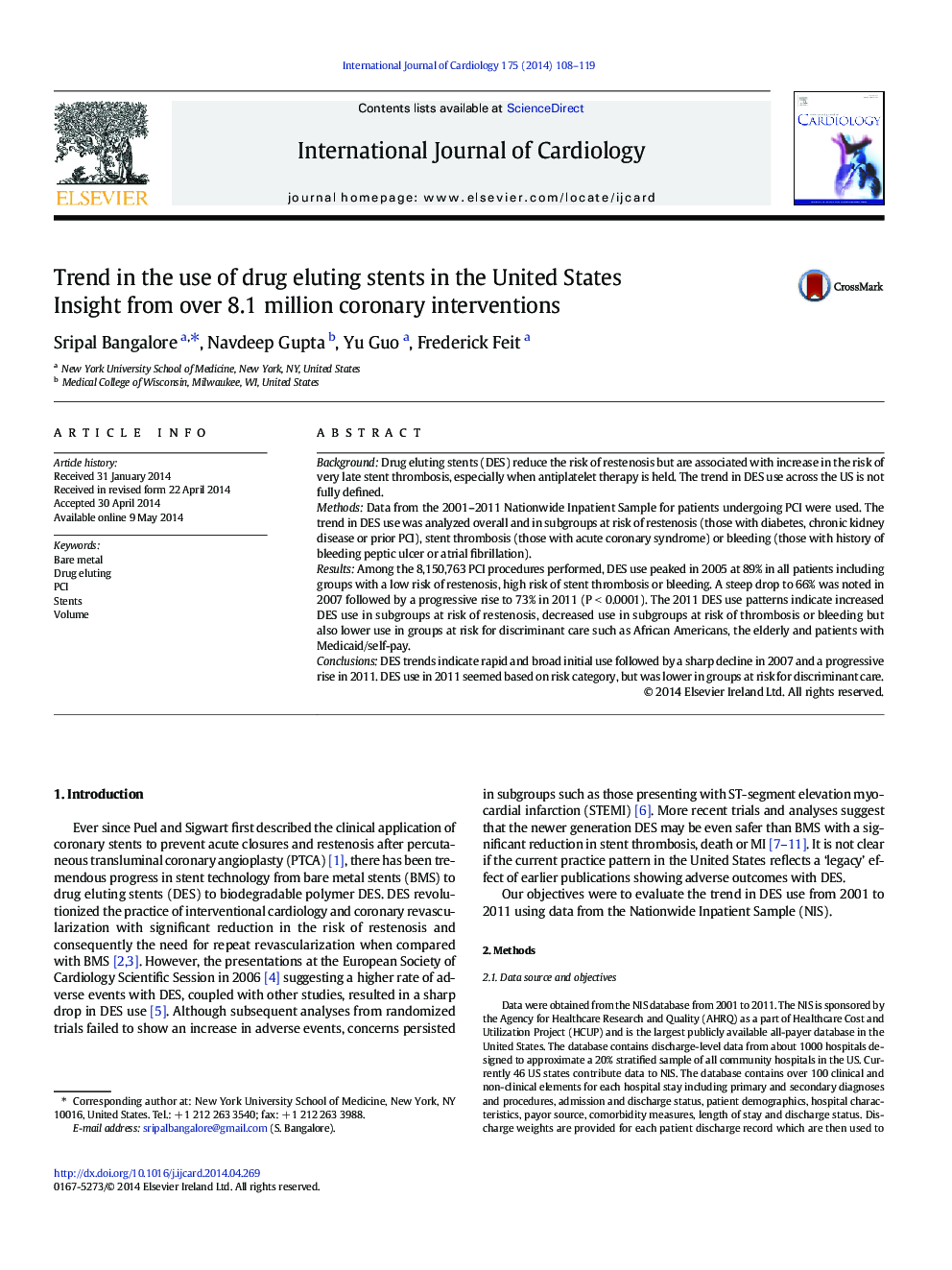| Article ID | Journal | Published Year | Pages | File Type |
|---|---|---|---|---|
| 5971237 | International Journal of Cardiology | 2014 | 12 Pages |
BackgroundDrug eluting stents (DES) reduce the risk of restenosis but are associated with increase in the risk of very late stent thrombosis, especially when antiplatelet therapy is held. The trend in DES use across the US is not fully defined.MethodsData from the 2001-2011 Nationwide Inpatient Sample for patients undergoing PCI were used. The trend in DES use was analyzed overall and in subgroups at risk of restenosis (those with diabetes, chronic kidney disease or prior PCI), stent thrombosis (those with acute coronary syndrome) or bleeding (those with history of bleeding peptic ulcer or atrial fibrillation).ResultsAmong the 8,150,763 PCI procedures performed, DES use peaked in 2005 at 89% in all patients including groups with a low risk of restenosis, high risk of stent thrombosis or bleeding. A steep drop to 66% was noted in 2007 followed by a progressive rise to 73% in 2011 (PÂ <Â 0.0001). The 2011 DES use patterns indicate increased DES use in subgroups at risk of restenosis, decreased use in subgroups at risk of thrombosis or bleeding but also lower use in groups at risk for discriminant care such as African Americans, the elderly and patients with Medicaid/self-pay.ConclusionsDES trends indicate rapid and broad initial use followed by a sharp decline in 2007 and a progressive rise in 2011. DES use in 2011 seemed based on risk category, but was lower in groups at risk for discriminant care.
